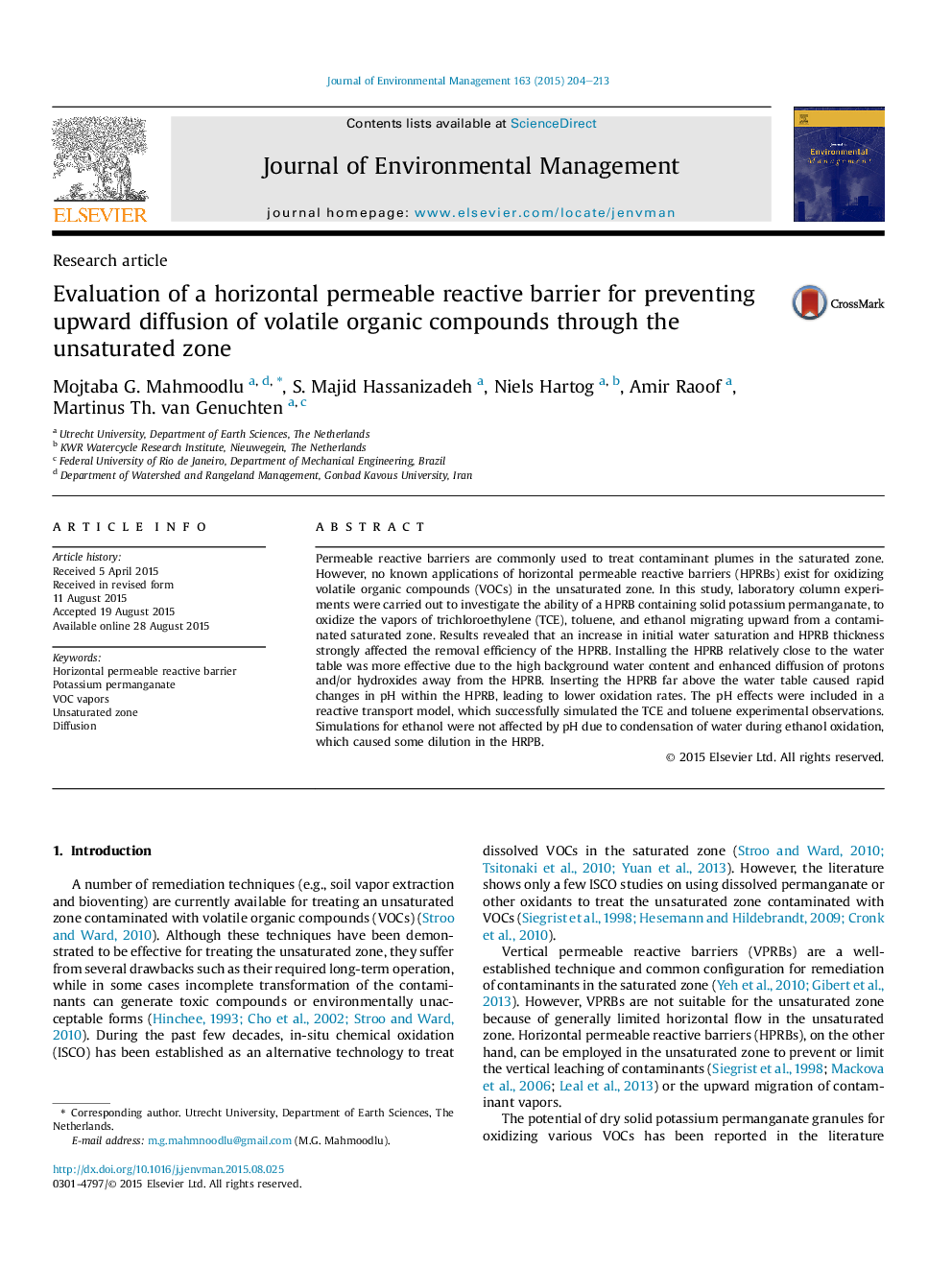| Article ID | Journal | Published Year | Pages | File Type |
|---|---|---|---|---|
| 1055528 | Journal of Environmental Management | 2015 | 10 Pages |
•HPRBs may provide a viable option for preventing VOC vapors to reach the land surface.•Water saturation and HPRB thickness affected the VOC removal efficiency.•pH effects were found to be the main reason for a decrease in the VOC oxidation rate.•HPRBs close to the water table showed little effect of pH on the oxidation rate.•A reactive transport model successfully simulated the VOC experimental data.
Permeable reactive barriers are commonly used to treat contaminant plumes in the saturated zone. However, no known applications of horizontal permeable reactive barriers (HPRBs) exist for oxidizing volatile organic compounds (VOCs) in the unsaturated zone. In this study, laboratory column experiments were carried out to investigate the ability of a HPRB containing solid potassium permanganate, to oxidize the vapors of trichloroethylene (TCE), toluene, and ethanol migrating upward from a contaminated saturated zone. Results revealed that an increase in initial water saturation and HPRB thickness strongly affected the removal efficiency of the HPRB. Installing the HPRB relatively close to the water table was more effective due to the high background water content and enhanced diffusion of protons and/or hydroxides away from the HPRB. Inserting the HPRB far above the water table caused rapid changes in pH within the HPRB, leading to lower oxidation rates. The pH effects were included in a reactive transport model, which successfully simulated the TCE and toluene experimental observations. Simulations for ethanol were not affected by pH due to condensation of water during ethanol oxidation, which caused some dilution in the HRPB.
